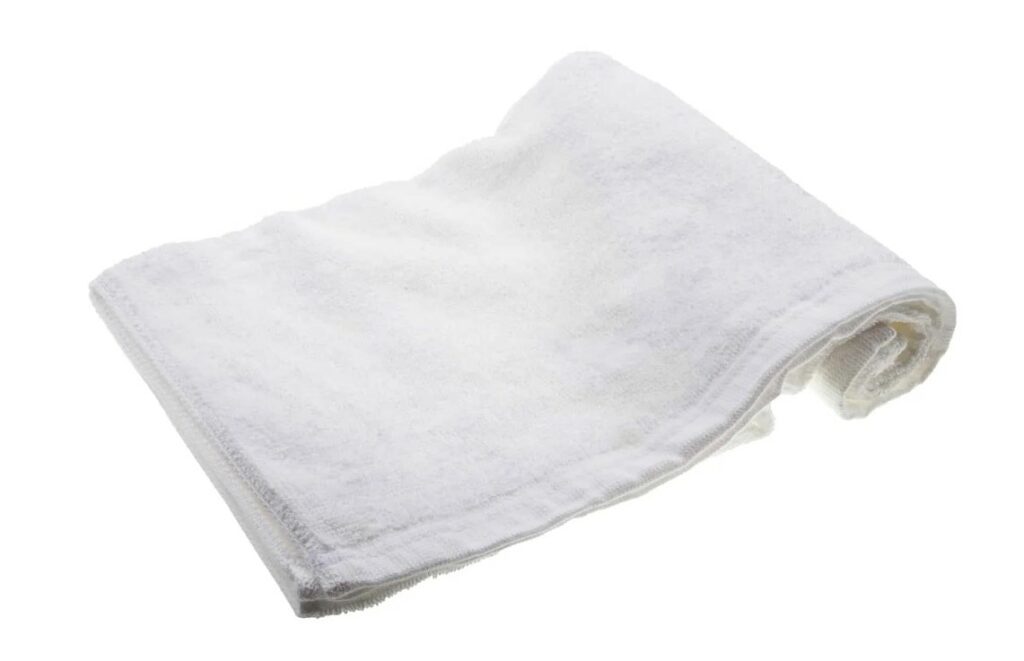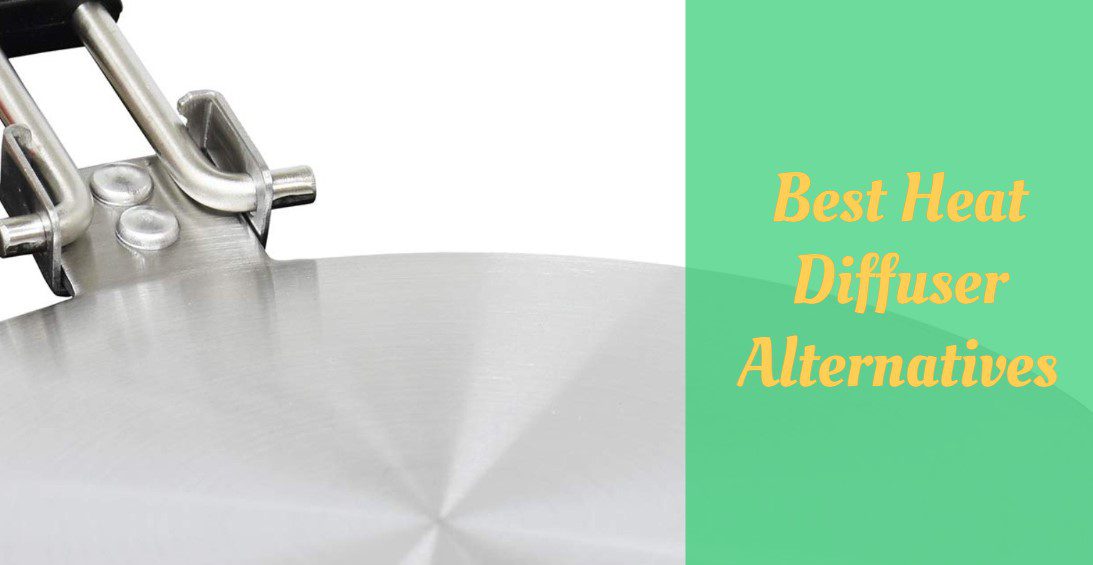While heat diffusers have long been a staple in many kitchens for their ability to evenly distribute heat and prevent scorching, not everyone has access to these specialized tools. In this article, we will explore the 7 best heat diffuser alternatives, each offering unique benefits and solutions for your cooking needs.
And check also an interesting collection of the best gas grills under $1000.
Cast Iron Skillet or Pan
Using a cast iron skillet or pan as a heat diffuser is an ingenious solution when you need to cook something slowly and evenly. This method hinges on the excellent heat retention and distribution properties of cast iron. Unlike thinner, less robust materials, a cast iron skillet absorbs heat slowly but holds onto it for a long duration, releasing it evenly across its surface.
What sets a cast iron skillet apart as a heat diffuser alternative is its versatility. Not only does it serve as a buffer between the flame and your cooking vessel, but it can also be used as the primary cooking pan itself. For example, when making dishes that require a sear before a slow cook, you can sear the food directly in the skillet and then adjust the heat for a slow cook, all in the same pan. This versatility makes it a valuable asset in any kitchen.
However, using a cast iron skillet as a heat diffuser does come with some considerations. Firstly, it’s heavy, so handling it requires some care, especially when it’s hot. Secondly, it needs proper seasoning and maintenance to prevent rust and ensure a non-stick surface.
In essence, a cast iron skillet isn’t just an alternative to a heat diffuser; it’s a multifunctional tool that can elevate your cooking experience. Whether simmering a delicate sauce or searing a steak before slow cooking, it offers a reliable and effective way to manage heat in your culinary endeavors.
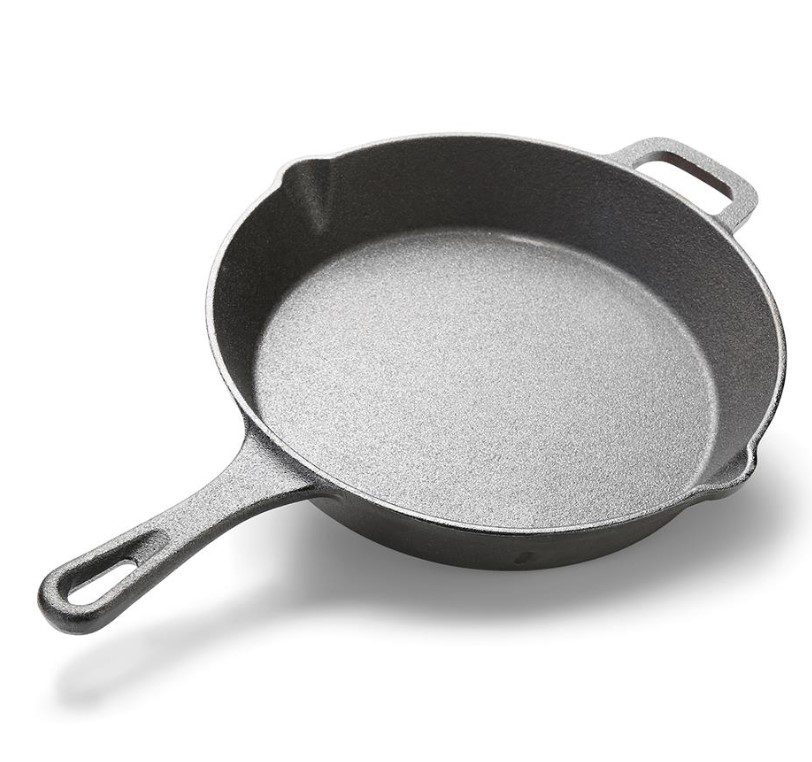
You may also like: 7 Best Gas Grills under $500
Flame Tamer
The flame tamer is a simple yet effective tool that plays a crucial role in managing heat in the kitchen, particularly when a recipe calls for low and steady temperatures. Typically constructed from metal, the flame tamer is designed to sit directly above the burner.
Its primary function is to disperse the heat that emanates from the burner, ensuring that it spreads evenly across the bottom of the pot or pan placed on top. This even distribution is crucial for dishes that are prone to burning, sticking, or require long, slow cooking times, such as delicate sauces, rice dishes, or slow-simmered stews.
One of the key advantages of using a flame tamer is its ability to prevent hot spots. Traditional burners often heat unevenly, which can lead to parts of the cooking vessel getting hotter than others.
This uneven heat distribution can cause food to cook unevenly, with some parts overcooking while others remain undercooked. A flame tamer mitigates this issue by creating a uniform heat surface, allowing for consistent cooking results.
Despite its simplicity, the flame tamer is an incredibly versatile tool. It’s suitable for use with gas stoves and comes in various sizes to fit different burners. It’s also relatively easy to clean and maintain.
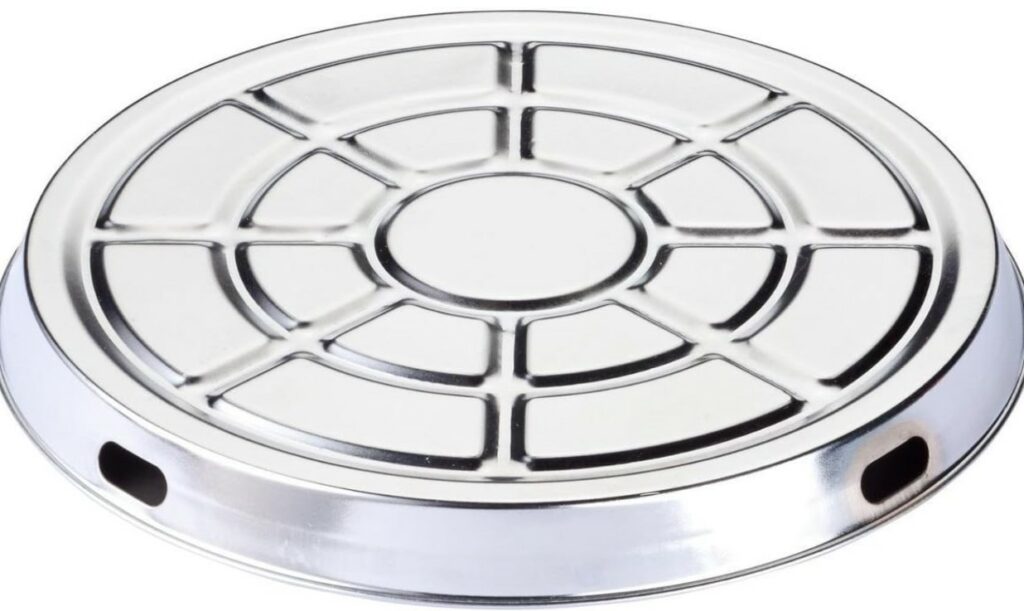
Simmer Ring
A simmer ring is an ingenious kitchen tool designed to aid in the delicate art of low-temperature cooking. It typically consists of a metal plate with a wooden handle and is used by placing it between the stove burner and the cooking pot. The primary purpose of a simmer ring is to create a buffer zone that reduces the intensity of direct heat reaching the cookware.
The metal plate of the simmer ring acts as a heat diffuser, absorbing and spreading the stove’s heat evenly before it reaches the bottom of the pot or pan. This prevents hot spots and ensures that the food doesn’t cook too quickly or unevenly. It’s particularly beneficial when using cookware that doesn’t distribute heat well, like some stainless steel or aluminum pots and pans.
Another advantage of the simmer ring is its versatility. It can be used on various types of stoves, including gas and electric, making it a universal tool. Its design often includes an adjustable vent or opening, allowing you to control the amount of heat that passes through, providing greater precision in temperature control.
In summary, a simmer ring is a practical tool for any cook who frequently prepares dishes that require low and slow heat. It’s simple to use, effective at regulating temperature, and adds a layer of control that can make all the difference in the delicate balance of flavors and textures in cooking.
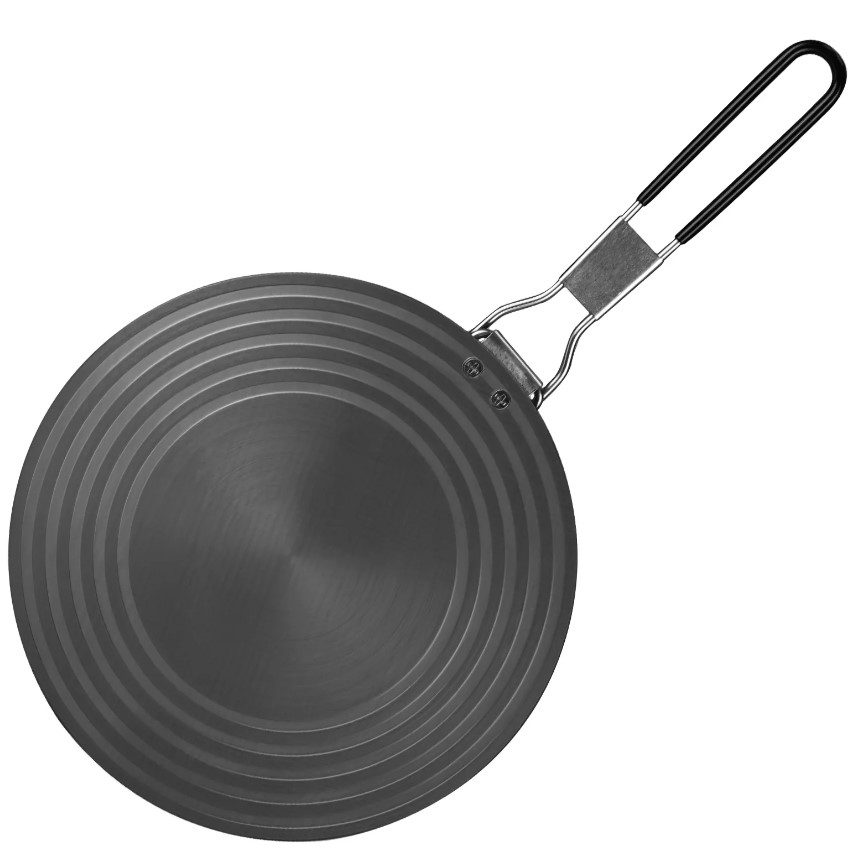
Baking Sheet or Cookie Sheet
Utilizing a baking sheet or cookie sheet as a heat diffuser is a creative kitchen hack that can come in handy in a pinch. When a traditional heat diffuser isn’t available, a baking sheet can serve as an impromptu solution for distributing heat more evenly across the bottom of your cooking vessel.
This method is particularly useful when cooking on stoves that have burners which may heat unevenly or too intensely for certain recipes.
The concept behind this method is simple: by placing a baking sheet over the burner and then setting your pot or pan on top, the sheet acts as a barrier that moderates the direct heat. The metal of the baking sheet absorbs the heat and spreads it across its surface, thereby reducing hot spots and providing a more uniform heat source.
However, it’s important to use this method with caution. Baking sheets are not designed for direct contact with stove burners, so they can warp or discolor over high heat. It’s best to use an old baking sheet that you don’t mind damaging.
While not a perfect substitute for a specialized heat diffuser, a baking sheet can be a useful temporary solution. It’s a testament to the resourcefulness often required in cooking, where improvisation can lead to successful and delicious outcomes.
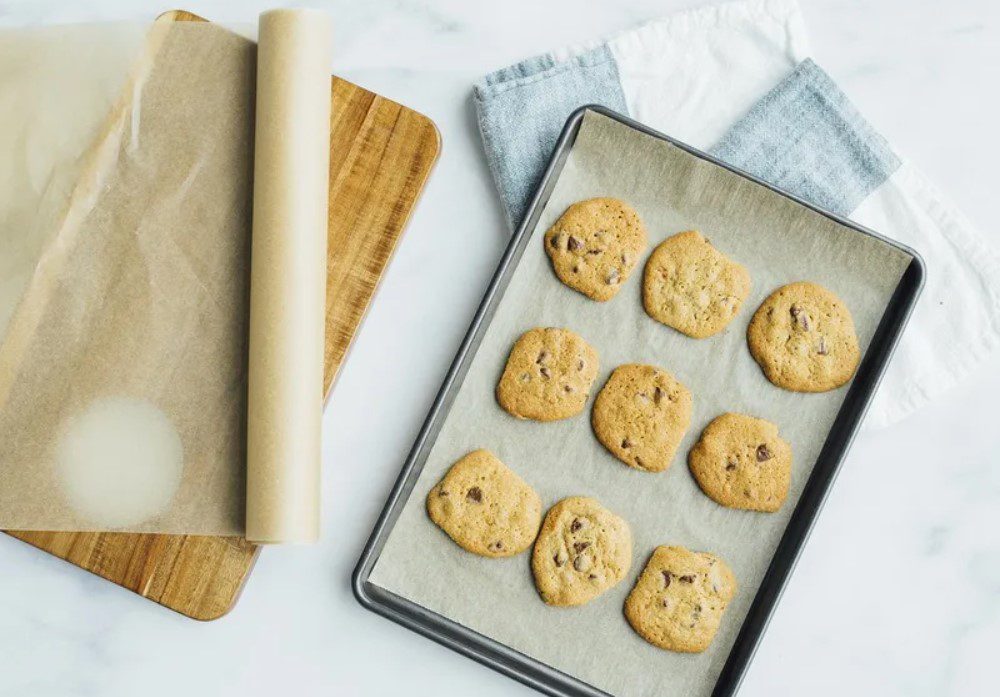
Double Boiler
The double boiler, a staple in many kitchens, is a remarkably effective alternative to a traditional heat diffuser, particularly for tasks that demand a gentle and consistent heat source. Essentially, a double boiler consists of two pots: a larger one filled with water and a smaller one that fits snugly on top.
The upper pot, which holds the food to be cooked or heated, never comes into direct contact with the heat source. Instead, it’s the steam from the boiling water in the lower pot that provides the heat.
This indirect heating method is ideal for processes where direct heat could cause burning or curdling, such as when melting chocolate, cooking custards, or preparing delicate sauces. The steam heat is gentle and even, ensuring that the contents of the upper pot warm up slowly and steadily. This controlled environment makes the double boiler an invaluable tool for any recipe requiring precise temperature management.
One of the key benefits of using a double boiler is its ability to maintain a consistent temperature, which is often difficult to achieve with direct heat. Since the water in the lower pot can never exceed boiling point, the temperature in the upper pot remains relatively stable. This stability is crucial for recipes that are sensitive to heat fluctuations.
Despite its advantages, the double boiler does require some vigilance. Water in the lower pot needs to be monitored to ensure it doesn’t boil dry, as this could damage the cookware and potentially pose a safety risk. Additionally, while the double boiler is an excellent tool for specific tasks, it’s not a universal substitute for a heat diffuser and may not be suitable for all types of cooking.
In conclusion, the double boiler offers a unique and effective solution for gentle heat application in cooking. Its ability to maintain a steady, controlled heat makes it indispensable for delicate culinary tasks, epitomizing the art of precision in cooking techniques.
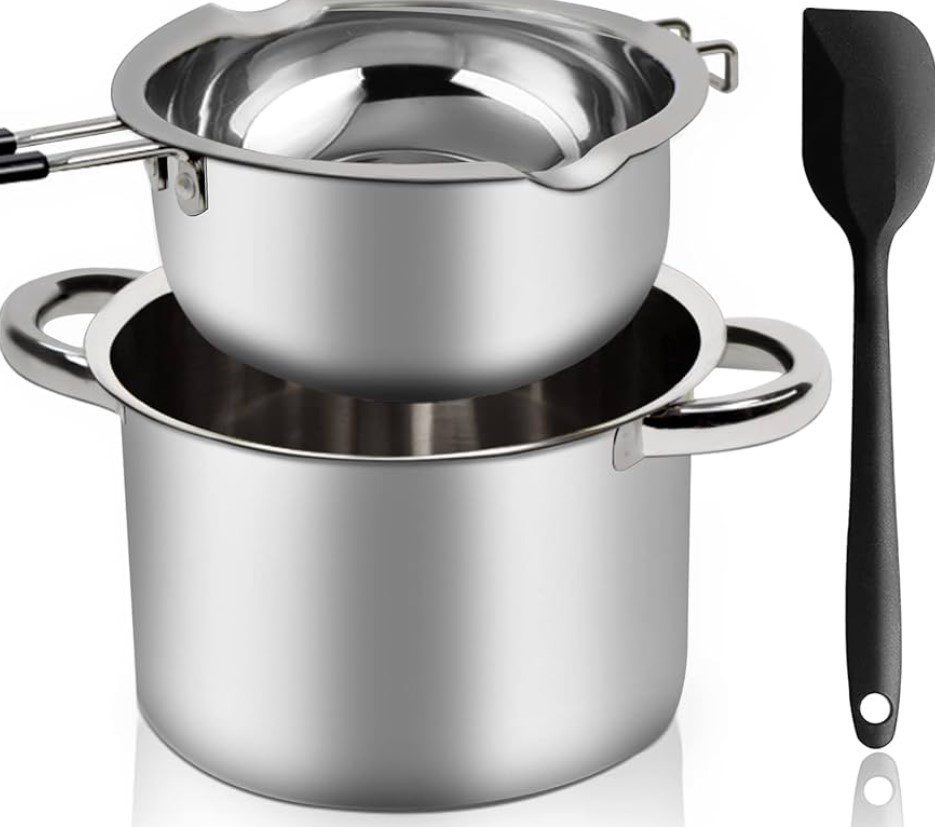
You may also like: 7 Best Gas Grills under $200
Heat-Resistant Glass Plate
A heat-resistant glass plate, often overlooked in the culinary world, can be a valuable tool for diffusing heat, especially in situations where more traditional methods are not available.
Made from materials like borosilicate, which is known for its high thermal resistance, these glass plates can withstand significant temperature variations without cracking or breaking. This property makes them suitable for use as a heat diffuser on a stove top.
When used in cooking, the heat-resistant glass plate is placed directly on the burner. The pot or pan is then placed on the glass plate. The glass acts as a barrier, spreading the heat evenly across its surface and thereby reducing the direct heat contact with the cookware.
This can be particularly beneficial for dishes that require slow, gentle cooking, such as simmering sauces, melting chocolate, or keeping food warm without overcooking.
One of the distinct advantages of using a heat-resistant glass plate is its transparency. This allows you to observe the flame or heating element, giving you a better sense of the heat intensity and making adjustments easier. Additionally, glass plates are generally easy to clean and maintain, resisting odors and stains.
However, there are considerations to keep in mind. It’s crucial to ensure that the glass plate used is indeed heat-resistant and designed for cooking purposes. Using regular glass can be dangerous, as it may shatter under high heat. Also, glass does not conduct heat as efficiently as metal, so there might be a need for longer cooking times or higher heat settings.
In summary, while not a common kitchen tool, a heat-resistant glass plate can be an effective heat diffuser in certain cooking scenarios. It offers an even heat distribution and the transparency for heat monitoring, but requires careful selection and handling to ensure safety and effectiveness in the kitchen.
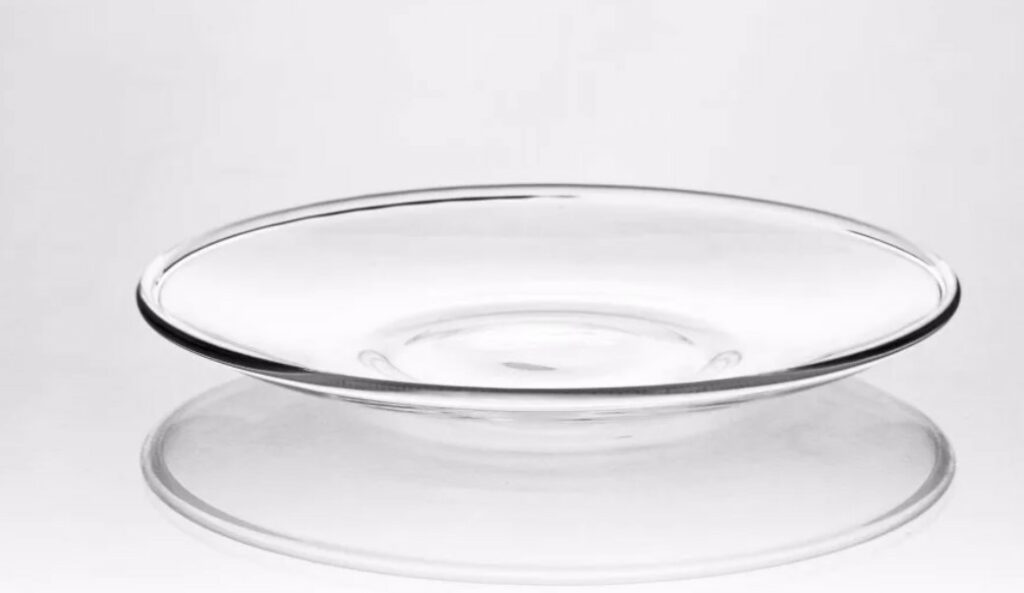
You may also like: 7 Best Ways to Smoke BBQ
Wet Towel or Cloth
The use of a wet towel or cloth as a makeshift heat diffuser is a traditional method rooted in resourcefulness and simplicity. This technique, while not widely known or practiced in modern kitchens, can be surprisingly effective in certain cooking situations, particularly when gentle, controlled heat is required. The principle is straightforward: a damp, thick cloth is placed between the burner and the cooking vessel, creating a barrier that moderates the intensity of direct heat.
This method is particularly useful when the lowest setting on a stove is still too high for a desired cooking process, like keeping a sauce warm without simmering or gently melting chocolate without a double boiler. The moist fabric absorbs and distributes the heat, preventing hot spots and providing a more uniform and gentle heating surface.
However, using a wet towel or cloth as a heat diffuser requires caution and constant vigilance. There’s a risk of the cloth drying out and burning, which not only poses a fire hazard but can also impart an unpleasant smell or taste to the food. It’s crucial to keep the cloth damp at all times and never leave the stove unattended while using this method.
Moreover, this technique is more of an emergency solution rather than a standard practice. It’s not recommended for prolonged cooking and is less reliable compared to conventional heat diffusers. The cloth’s effectiveness can vary depending on its material, thickness, and the level of moisture it retains.
In essence, while using a wet towel or cloth can be a clever workaround in a pinch, it’s important to approach this method with care and awareness of its limitations. It exemplifies the ingenuity often required in cooking, where adapting and improvising with available materials can lead to successful culinary outcomes.
